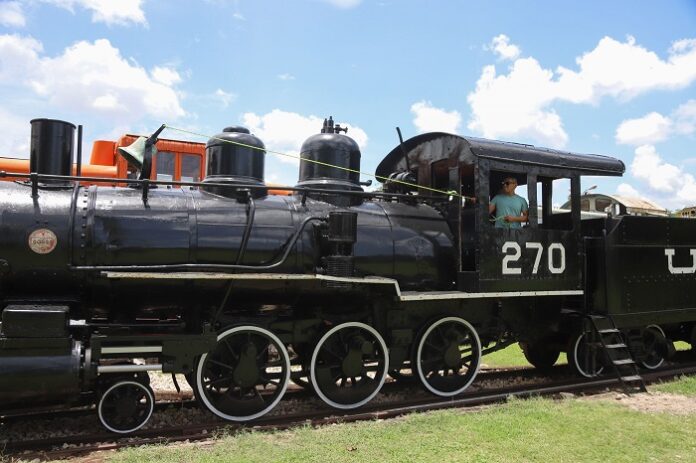The grounds of La Plancha park are almost completely flattened: 200,000 square meters destined for construction, so this weekend the cranes will arrive to move the locomotives and cars of the Yucatan Railroad Museum (MFY), while the work on the Gastronomic Corridor has already reached 47th Street, one block away from the "auction" of Montejo.
The units that make up the MFY will be removed, declared Pedro Garrido, administrator of the site. There is no trace of what were once the offices of the National Fund for Tourism Development (Fonatur), nor are the antennas of the property next door visible.
From the moment one enters the premises of the Museo del Ferrocarril, the mind flies to the past, at least to a century and a half, when trains became an important part of the industrial revolution of the world and of Mexico.
The meridians have a few steps from the Historical Center the Railway Museum, where we can recreate what this transport meant in the state, since it was introduced by the businessman José Rendón Peniche.
A visit to the Yucatan Railway Museum is our recommendation for your Sunday Walk, since it is a place located in Mérida, at one end of La Plancha or the Central Station.
Since it was founded 17 years ago, it has seen hundreds of Yucatecans and foreigners parade in search of spending a different day in the Yucatecan capital itself.
It consists of 43 pieces of trains, between wagons and locomotives, including one of Steam 270, built in the United States in 1903 and that appears in the films of Indians and trains in the western cinema of the United States.
–This is our jewel in locomotives, since it is from 1903 and built in Philadelphia, United States– explained Flavio Baak Bacelis, who acted as a tourist guide on the museum for many years.
There are also other locomotives, such as La Vaca, white, which was so powerful in its time that it could pull up to 50 freight or passenger wagons.
Between 2009 and 2011, when the museum was closed, La Vaca had parts of its engine stolen, presumably to use it as spare parts in other locomotives. Of the causes of this attack on history, nobody knows anything.
Another jewel of the Railway Museum is the Rendón Peniche wagon, from 1890, which is a completely wooden train car, where only the wheels and coupling wheels were made of metal.
The Rendón Peniche, the guide tells us, was a luxury car of the United Railroads of Yucatán, used only by senior managers and governors, so much so that one of its owners was President Felipe Carrillo Puerto.
“It is not known if he used it, but it was his, because in the records of the owners of the Rendón Peniche car the name of Felipe Carrillo Puerto appears,” Baak Bacelis explained.
Currently the Rendón Peniche wagon or car is semi-destroyed by the passage of time and because, being made of wood, the damage was greater when it derailed many years ago.
It was used in the movies “Peregrina” and “Guerra de Castas”, so it is a special attraction in the museum.
Part of its equipment and utensils that speak of its luxuries are exhibited in the museum itself, in another of the carriages.






